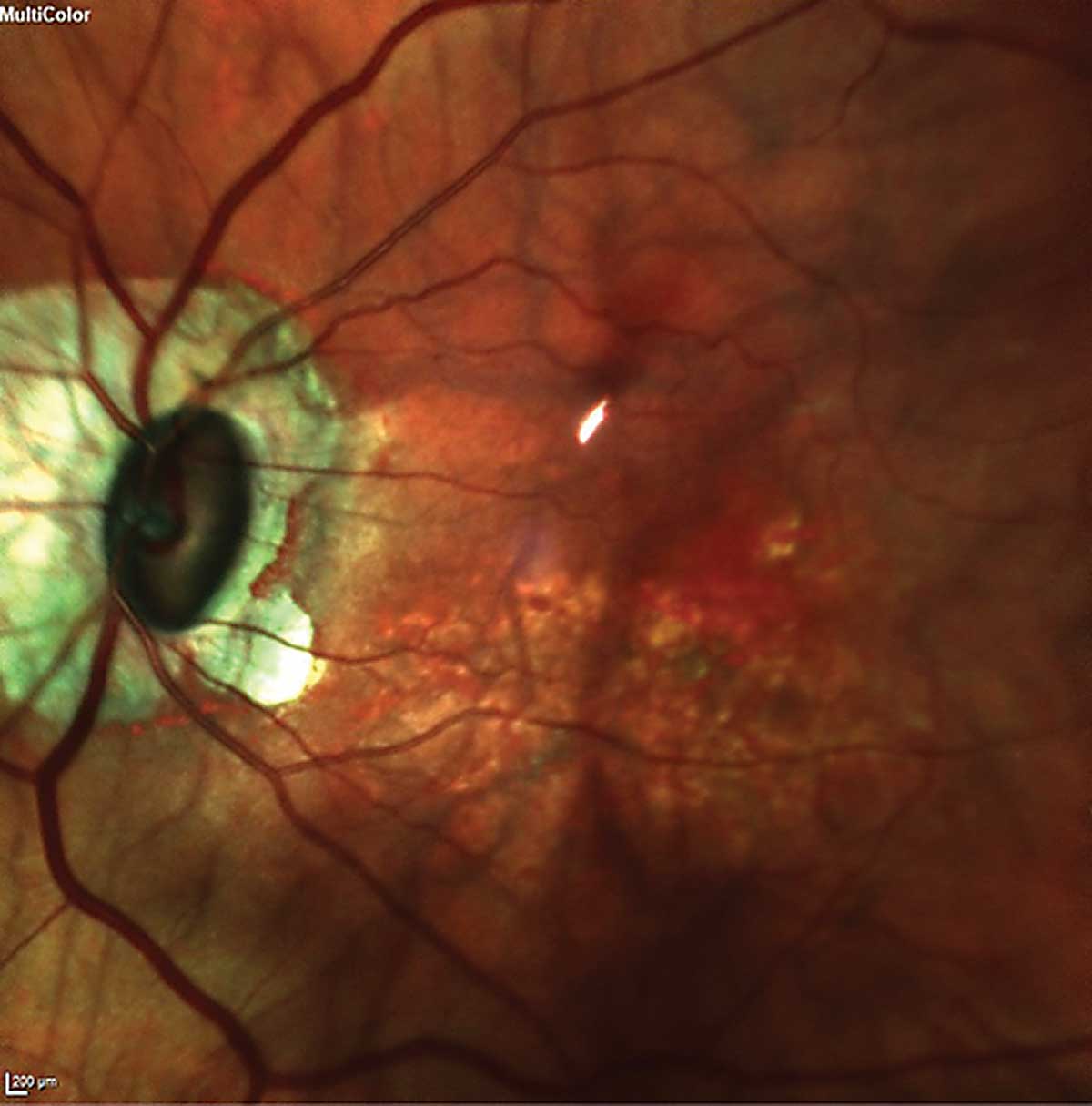 |
| Increased disc-tilt ratio and myopia progression were both linked to a greater number of patients with RNFL defects. Photo: James L. Fanelli, OD. Click image to enlarge. |
There is scarce information on patients with a suspicious-looking optic nerve head (ONH) and normal-range intraocular pressure (IOP), especially in pediatric glaucoma suspects who show a large cup-to-disc ratio without any IOP elevation. A longitudinal study performed in Korea was conducted to better understand the association between myopic optic disc deformation and glaucomatous damage among pediatric glaucoma suspects. It found that morphological alterations in the ONH during axial elongation might represent an underlying susceptibility to glaucomatous damage in children with large vertical c/d ratio.
The researchers retrospectively reviewed the connection between morphological alteration in the ONH during myopia progression and the development of retinal nerve fiber layer (RNFL) defect among children with a large vertical cup-to-disc ratio. The trial included 65 normotensive eyes of 65 children under eight years old who had a vertical c/d ratio of 0.5 or greater but had no additional signs of glaucoma that could be tracked at young adulthood (18 to 28 years old). Researchers recorded the participants spherical equivalent, IOP, vertical cup-to-disc ratio and optic disc tilt ratio.
At baseline, the study authors noted a mean age of 5.4 as well as an average vertical CDR and spherical equivalent of 0.62 and −0.30D respectively. After an average follow up of 16.1 years, the mean vertical c/d was 0.64, and the mean spherical equivalent was −3.20D.
Among the 65 eyes, 18.5%—or one in 5.5 over the minimum 11-year observation period—developed RNFL defect, according to the study authors, who reported that a greater increase in disc tilt ratio and myopia progression were both significantly correlated with higher risk of RNFL defect development.
In this cohort of Korean pediatric glaucoma suspects with a large vertical cup-to-disc ratio, progressive optic disc tilt during myopia progression was associated with higher risk of developing RNFL defects, the study authors concluded. “This suggests that, for school-aged normotensive children with large optic disc cupping, greater ONH-morphological alterations throughout childhood and adolescence might be correlated with vulnerability to further glaucomatous injury.”
Ha A, Baek SU, Kim J-S, et al. Association of progressive optic disc tilt with development of retinal nerve fiber layer defect in children with large cup-to-disc ratio. Br J Ophthalmol. January 11, 2022. [Epub ahead of print]. |

